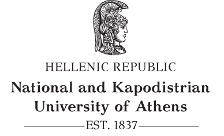- Αρχική
- THE PROGRAM
-
MODULES
- THE ARCHAEOLOGY OF BRONZE AGE AEGEAN (1010)
- KEY THEMES IN EASTERN MEDITERRANEAN ARCHAEOLOGY (1020)
- STATE FORMATION AND THE RISE OF POWER IN AN INSULAR WORLD: THE ARCHAEOLOGY OF MINOAN CRETE (3020)
- THE ARCHAEOLOGY OF MYCENAEAN GREECE (1050)
- COLLAPSE AND TRANSFORMATION: CRISIS, RESILIENCE, AND REORGANIZATION FROM THE LATE THIRD TO EARLY FIRST MILLENNIUM BCE IN THE EASTERN MEDITERRANEAN (3030)
- UNDERSTANDING THE ARCHAEOLOGICAL RECORD: PREHISTORIC CYPRUS AND THE EAST MEDITERRANEAN (2080)
- THE VISUAL CULTURES OF CLASSICAL GREECE (1030)
- ANCIENT GREEK SCULPTURE (1080)
- ATTIC POTTERY OF THE ARCHAIC AND CLASSICAL PERIODS (1090)
- THE ARCHITECTURE OF THE MYSTERY CULTS (2090)
- THE ARCHAEOLOGY OF DEATH IN THE ANCIENT GREEK WORLD (3010)
- STAFF
- ACTIVITIES
- ADMISSION
- RESOURCES
- CONTACT US
- NEWS AND EVENTS
KEY THEMES IN EASTERN MEDITERRANEAN ARCHAEOLOGY (1020)
Winter Semester, Core module, 10 ECTS
Instructor: Konstantinos Kopanias
Summary
This course offers an introduction to the archaeology of the Bronze Age and Early Iron Age in the Eastern Mediterranean. It surveys major archaeological sites in Anatolia, Egypt, and the Levant, spanning from the 3rd millennium to the middle of the 1st millennium BCE. Alongside the archaeological record, emphasis is placed on textual evidence and the historical and socioeconomic developments of the period.
Learning outcomes
By the end of the course, students will:
- be familiar with the main sites and types of archaeological evidence.
- critically read primary sources and interpret visual materials, assessing their value and potential biases as evidence.
- work with different types of archaeological data.
- compare methods of archaeological analysis.
- critically evaluate contrasting interpretations of the same material evidence.
- understand how arguments about the past are constructed through the archaeological record.
- collaborate effectively in group settings
- formulate and articulate their own views on the Bronze Age and Early Iron Age in the Eastern Mediterranean, both orally and in writing.
Syllabus
The course examines the following topics:
- Introduction: Geography and Climate of the Ancient Near East (1 week)
- Prehistoric Mesopotamia & Egypt (1 week)
- Mesopotamia: Early Dynastic, Akkadian and Ur III Periods (2 week)
- Egypt: Old Kingdom (1 week)
- Egypt: Middle Kingdom and the 2nd Intermediate Period (1 week)
- Anatolia: Kingdom of Hatti (2 weeks)
- Egypt: The New Kingdom (2 week)
- Early Iron Age: Assyria, Anatolia, Egypt, Levant (1 week)
- Assyrian Empire (2 week)
Assessment
The evaluation takes place in English and it is both summative and conclusive. During the semester the students are required to write essays on topics related to the content of the course and to deliver examination-papers which comprise a combination of multiple choice questionnaires, short-answer questions and open-ended questions. The final written examination has a similar structure as well.
*Essay: 70%
Oral presentation: 20%
Written work: 10%
*Essay (3,500-5,000 words). A list of indicative topics is provided, but students are strongly encouraged to discuss and personalize the essay topic with the course coordinator.
Student's study hours
Lectures: 20
Educational visits: 4
Interactive teaching: 2
Study and analysis of bibliography: 80
Cooperation with the instructor: 24
Tutorials: 10
Independent study (incl. project): 30
Essay writing: 80
Course total: 250
Recommended bibliography
Akkermans, P. M. M. G., and G.M. Schwartz. 2003. The Archaeology of Syria. From Complex Hunter-Gatherers to Early Urban Societies (c. 16,000-300 BC). Cambridge world archaeology: Cambridge University Press, Cambridge - NY.
Bard, K.A. 2007. Introduction to the Archaeology of Ancient Egypt. Malden, MA: Blackwell Pub.
Mieroop, M. van de. 2016. A History of the Ancient Near East ca. 3000-323 BC. Blackwell history of the ancient world. 3rd ed. Oxford: Wiley Blackwell.
Mieroop, M. van de.. 2021. A History of Ancient Egypt. Blackwell history of the ancient world. 2nd ed. Malden, MA: Wiley-Blackwell.
Potts, D.T. 2012. A Companion to the Archaeology of the Ancient Near East. Malden, Mass.: Wiley-Blackwell.
Steadman, S.R., and J.G. McMahon. Eds. 2011. The Oxford handbook of ancient Anatolia, 10,000-323 B.C.E. Oxford, New York: Oxford University Press.
